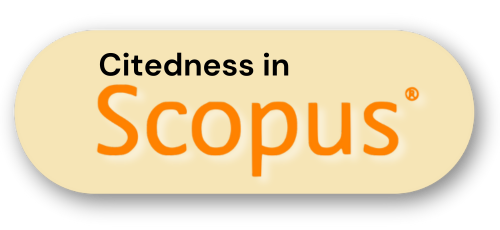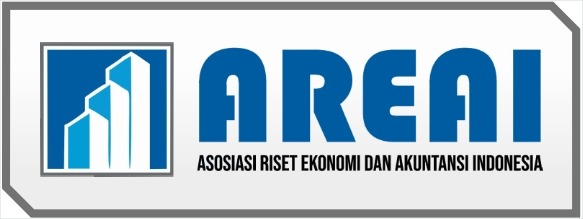The Role of Geography Research in Supporting Sustainable Development in Ambon City, Indonesia: A Review
DOI:
https://doi.org/10.61194/economics.v1i2.67Keywords:
Ambon City, Geography Research, Sustainable DevelopmentAbstract
This study discusses the significant role of geographic research in supporting sustainable development efforts in Ambon City, Indonesia. Through the analysis of urban growth patterns, natural resource management, spatial planning, and identification of environmental and social impacts, geographic research provides insights that guide urban planners and decision-makers. This research. This research uses a descriptive qualitative approach. The type of research used is a literature study which is research that has been done before by collecting books, journals, magazines, and scientific papers that are related to how the utilization of geography research in the fields of disaster, regional and urban planning, health, tourism, agriculture and forestry and climate change is applied to realize an environmentally sound and sustainable Ambon City. The results show that Geography research plays an important role in supporting sustainable development in Ambon City, Indonesia, revealing that geography research is not just an analytical tool, but also a valuable guide for policy makers, urban planners, and communities in designing and implementing sustainable development. Through collaboration and application of research findings, Ambon City can grow into a city that not only develops economically, but also preserves the environment and the welfare of its people.
References
Fu, B. (2020). Promoting Geography for Sustainability. Geography and Sustainability, 1(1), 1–7. https://doi.org/10.1016/j.geosus.2020.02.003
Gress, D. R., & Tschapka, J. M. (2017). Bridging Geography and Education for Sustainable Development: A Korean Example. Journal of Geography, 116(1), 34–43. https://doi.org/10.1080/00221341.2015.1119874
Guo, F., Lane, J., Duan, Y., Stoltman, J., Khlebosolova, O., Lei, H., & Zhou, W. (2018). Sustainable Development in Geography Education for Middle School in China. Sustainability, 10(11), 3896. https://doi.org/10.3390/su10113896
Hallinger, P., & Chatpinyakoop, C. (2019). A Bibliometric Review of Research on Higher Education for Sustainable Development, 1998–2018. Sustainability, 11(8), 2401. https://doi.org/10.3390/su11082401
Hamilton, A. B., & Finley, E. P. (2019). Qualitative methods in implementation research: An introduction. Psychiatry Research, 280, 112516. https://doi.org/10.1016/j.psychres.2019.112516
Heinrich Rakuasa, Nadhi Sugandhi, Zainudin, Wulan Abdul Wahab, K. (2023). Aplikasi GAI Dan UAVs Untuk Analisis Korelasi Kepadatan Permukiman Dan LST Di Pulau Panggang DKI Jakarta. Larisa Penelitian Multidisiplin, 1(1), 31–35.
Heinrich Rakuasa, & P. C. L. (2023). Monitoring Urban Sprawl in Ambon City Using Google Earth Engine. MULTIPLE: Journal of Global and Multidisciplinary, 1(2), 88–100.
Intopiana, L. V., Putuhena, J. D., & Boreel, A. (2020). Pemetaan Daerah Rawan Erosi Di DAS Wae Batu Merah Kota Ambon. MAKILA, 14(1), 56–71.
Latue, P. C., Rakuasa, H., & Sihasale, D. A. (2023). Analisis Kerapatan Vegetasi Kota Ambon Menggunakan Data Citra Satelit Sentinel-2 dengan Metode MSARVI Berbasis Machine Learning pada Google Earth Engine. Sudo Jurnal Teknik Informatika, 2(2), 68–77. https://doi.org/10.56211/sudo.v2i2.270
Liu, Y. (2020). Sustainable Development in Urban Areas: Contributions from Generalized Trade. Sustainable Cities and Society, 61, 102312. https://doi.org/https://doi.org/10.1016/j.scs.2020.102312
Marhelin C Mehdila, Daniel A Sihasale, H. R. (2023). Sistim Informasi Geografis Sebaran Objek Wisata Bahari Di Kecamatan Salahutu, Pulau Ambon Berbasis Web Dengan Menggunakan ArcGIS StoryMaps. Larisa Penelitian Multidisiplin, 1(1), 8–14.
Mehdil, M. C., Rakuasa, H., Sihasale, D. A., & Riry, R. B. (2022). PEMETAAN SEBARAN OBJEK WISATA BAHARI DI PULAU AMBON MENGGUNAKAN SISTEM INFORMASI GEOGRAFIS. Jurnal Environmental Science, 4(2). https://doi.org/10.35580/jes.v4i2.32464
Mio, C., Panfilo, S., & Blundo, B. (2020). Sustainable development goals and the strategic role of business: A systematic literature review. Business Strategy and the Environment, 29(8), 3220–3245. https://doi.org/10.1002/bse.2568
Muin, A., & Rakuasa, H. (2023a). Evaluasi Rencana Tata Ruang Wilayah Kota Ambon Berdasarkan Aspek Kerawanan Banjir. ULIL ALBAB : Jurnal Ilmiah Multidisiplin, 2(5), 1727–1738. https://doi.org/https://doi.org/10.56799/jim.v2i5.1485
Muin, A., & Rakuasa, H. (2023b). Pemanfaat Geographic Artificial Intelligence (Geo-AI) Untuk Identifikasi Daerah Rawan Banjir Di Kota Ambon. Gudang Jurnal Multidisiplin Ilmu, 1(2), 58-63. https://doi.org/https://doi.org/10.59435/gjmi.v1i2.24
Philia Christi Latue, & H. R. (2023). Pemanfaatan Data Penginderaan Jauh dan Sistim Informasi Geografis Untuk Identifikasi Perkembangan Lahan Terbangun pada Wilayah Rawan Gempa Bumi di Kota Ambon. INSOLOGI: Jurnal Sains Dan Teknologi, 2(3), 476–485. https://doi.org/https://doi.org/10.55123/insologi.v2i3.1899
Philia Christi Latue, H. R. (2022). Dinamika Spasial Wilayah Rawan Tsunami di Kecamatan Nusaniwe, Kota Ambon, Provinsi Maluku. Jurnal Geosains Dan Remote Sensing (JGRS), 3(2), 77–87. https://doi.org/https://doi.org/10.23960/jgrs.2022.v3i2.98
Pizzi, S., Caputo, A., Corvino, A., & Venturelli, A. (2020). Management research and the UN sustainable development goals (SDGs): A bibliometric investigation and systematic review. Journal of Cleaner Production, 276, 124033. https://doi.org/10.1016/j.jclepro.2020.124033
Rahma, H., Fauzi, A., Juanda, B., & Widjojanto, B. (2019). Development of a Composite Measure of Regional Sustainable Development in Indonesia. Sustainability, 11(20), 5861. https://doi.org/10.3390/su11205861
Rakuasa, H., Helwend, J. K., & Sihasale, D. A. (2022). Pemetaan Daerah Rawan Banjir di Kota Ambon Menggunakan Sistim Informasi Geografis. Jurnal Geografi: Media Informasi Pengembangan Dan Profesi Kegeografian, 19(2), 73–82. https://doi.org/https://doi.org/10.15294/jg.v19i2.34240
Rakuasa, H., Tambunan, M. P., & Tambunan, R. P. (2021). Analisis Sebaran Spasial Tingkat Kejadian Kasus Covid-19 Dengan Metode Kernel Density di Kota Ambon. Jurnal Geografi: Media Informasi Pengembangan Dan Profesi Kegeografian, 18(2), 76–82. https://doi.org/https://doi.org/10.15294/jg.v18i2.28234
Rakuasa, H. (2022). ANALISIS SPASIAL TEMPORAL SUHU PERMUKAAN DARATAN/ LAND SURFACE TEMPERATURE (LST) KOTA AMBON BERBASIS CLOUD COMPUTING: GOOGLE EARTH ENGINE. Jurnal Ilmiah Informatika Komputer, 27(3), 194–205. https://doi.org/10.35760/ik.2022.v27i3.7101
Rakuasa, H., & Mehdila, M. C. (2023). Penerapan Pendidikan Mitigasi Bencana Gempa Bumi untuk Siswa dan Guru di SD Negeri 1 Poka, Kota Ambon, Provinsi Maluku. Jurnal Pengabdian Masyarakat Indonesia, 3(3), 441–446. https://doi.org/10.52436/1.jpmi.1138
Rakuasa, H., Sihasale, D. A., & Latue, P. C. (2022). Model Tutupan Lahan di Daerah Aliran Sungai Kota Ambon Tahun 2031: Studi Kasus DAS Wai Batu Gantung, Wai Batu Gajah, Wai Tomu, Wai Batu Merah Dan Wai Ruhu. Jurnal Tanah Dan Sumberdaya Lahan, 9(2), 473–486. https://doi.org/10.21776/ub.jtsl.2022.009.2.29
Rakuasa, H., Sihasale, D. A., Somae, G., & Latue, P. C. (2023). Prediction of Land Cover Model for Central Ambon City in 2041 Using the Cellular Automata Markov Chains Method. Jurnal Geosains Dan Remote Sensing, 4(1), 1–10. https://doi.org/10.23960/jgrs.2023.v4i1.85
Rakuasa, H., Supriatna, S., Karsidi, A., Rifai, A., Tambunan, M. ., & Poniman K, A. (2022). Spatial Dynamics Model of Earthquake Prone Area in Ambon City. IOP Conference Series: Earth and Environmental Science, 1039(1), 012057. https://doi.org/10.1088/1755-1315/1039/1/012057
Rakuasa, H., Supriatna, S., Tambunan, M. P., Salakory, M., & Pinoa, W. S. (2022). ANALISIS SPASIAL DAERAH POTENSI RAWAN LONGSOR DI KOTA AMBON DENGAN MENGGUNAKAN METODE SMORPH. Jurnal Tanah Dan Sumberdaya Lahan, 9(2), 213–221. https://doi.org/10.21776/ub.jtsl.2022.009.2.2
Rakuasa H, R. A. (2021). PEMETAAN KERENTANAN BENCANA TANAH LONGSOR BERBASIS SISTEM INFORMASI GEOGRAFIS DI KOTA AMBON. In BIG (Ed.), Prosiding Seminar Nasional Geomatika (pp. 327–336). BIG & MAPIN. https://doi.org/http://dx.doi.org/10.24895/SNG.2020.0-0.1148
Roller, M. R. (2019). A quality approach to qualitative content analysis: Similarities and differences compared to other qualitative methods. Forum Qualitative Sozialforschung/Forum: Qualitative Social Research, 20(9), 1–21. https://doi.org/https://doi.org/10.17169/fqs-20.3.3385
Salakory, M., Rakuasa, H. (2022). Modeling of Cellular Automata Markov Chain for predicting the carrying capacity of Ambon City. Jurnal Pengelolaan Sumberdaya Alam Dan Lingkungan (JPSL), 12(2), 372–387. https://doi.org/https://doi.org/10.29244/jpsl.12.2.372-387
Secundo, G., Ndou, V., Vecchio, P. Del, & De Pascale, G. (2020). Sustainable development, intellectual capital and technology policies: A structured literature review and future research agenda. Technological Forecasting and Social Change, 153, 119917. https://doi.org/10.1016/j.techfore.2020.119917
Sprenger, S., & Nienaber, B. (2018). (Education for) Sustainable Development in Geography Education: review and outlook from a perspective of Germany. Journal of Geography in Higher Education, 42(2), 157–173. https://doi.org/10.1080/03098265.2017.1379057
Sugandhi, N., Supriatna, Kusratmoko, E., & Rakuasa, H. (2023). Spatial modelling of tsunami hazards and their exposure to settlements in Ambon City. IOP Conference Series: Earth and Environmental Science, 1173(1), 012013. https://doi.org/10.1088/1755-1315/1173/1/012013
Walshe, N. (2017). An interdisciplinary approach to environmental and sustainability education: developing geography students’ understandings of sustainable development using poetry. Environmental Education Research, 23(8), 1130–1149. https://doi.org/10.1080/13504622.2016.1221887






